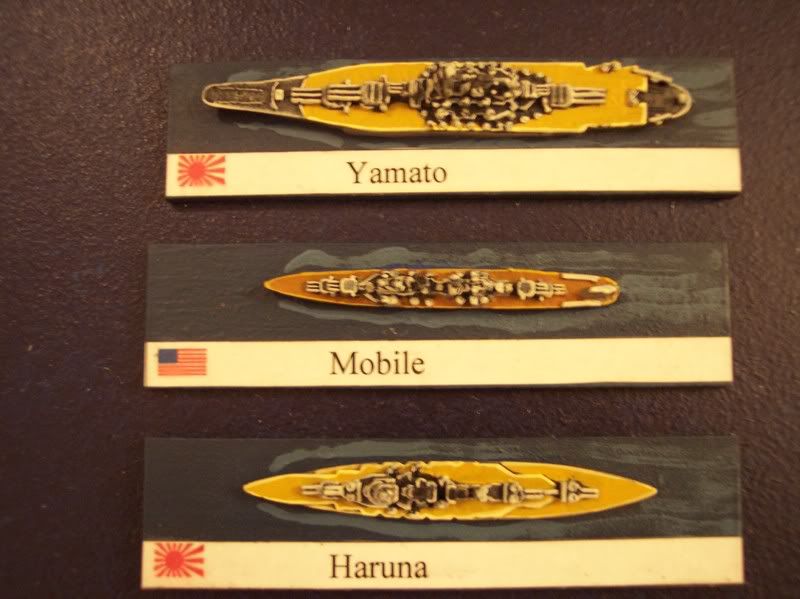Topic: Playtested my GenCon scenario tonight. . .
. . . with surprising results!
The scenario --
January 19, 1915
While patrolling the outer edges of Heligoland Bight in the hopes of intercepting any German attempt to break out, the 4th Battle Squadron has been caught in a heavy storm. Blown miles off course, the squadron has become separated from the main patrol fleet and most of its escorts have been scattered. To make matters worse, HMS Erin struck a drifting mine and sank with heavy loss of life. Just as the weather clears and the battered squadron sets course for home, the remnants of its cruiser screen report contact with enemy capital ships. The Germans are attempting to break out, and only the battered and depleted 4th Battle Squadron is in position to stop them from reaching the coast on England!
Order of Battle
Grand Fleet
4th Battle Squadron
Benbow
Agincourt
Bellerophon
Dreadnought
Emperor of India
Temeraire
Attached Armored Cruisers
Defence
Warrior
Black Prince
Minotaur
Shannon
Attached Light Cruisers
Galatea
Paheton
High Seas Fleet
I Battle Squadron
1st Division
Ostfriesland
Thuringen
Helgoland
Oldenburg
2nd Division
Posen
Rheinland
Nassau
Westfalen
I Scouting Group
Seydlitz
Moltke
Derfflinger
I was expecting the British fleet to get pounded into scrap by the superior forces of the High Seas Fleet elements.
Unfortunately for the Germans, while they were successfully able to form an effective battle line with the I Battle Squadron, the resulting formation left the 2nd Division miles to the rear, unable to engage effectively in the early part of the battle.
Meanwhile the I Scouting Group charged forward on a course tangential to the British axis of attack, intending to rake the British dreadnoughts and armored cruisers with punishing fire, leaving them easy meat for the I Battle Squadron to clean up. Unfortunately, the British admiral successfully used his light cruisers to screen the British fleet behind a thick smokescreen - rendering the powerful German battlecruisers largely impotent during the early enagagement.
The result was that the British were successfully able to deploy the bulk of their dreadnoughts and armored cruisers in a manner to engage the largely isolated 1st Division of the German I Battle Squadron - with predictable results. By the time the battlecruisers had manuevered into position, and the 2nd Division had closed the range, Thuringen had exploded quite spectacularly to a magazine hit after receiving a drubbing from Dreadnought, Emperor of India, and Agincourt.
Helgoland followed quickly after once the British fire shifted to her and she suffered a long series of consecutive heavy shell hits.
German return fire was largely ineffectual. . . although they managed to cripple the Dreadnought. Listing heavily she made her best speed in trying to escape the combat zone, Defence had been sunk, and Bellerophon had been successfully torpedoed by the Moltke and the crew was making preparations to abandon ship.
The issue was settled decisively however when a couragous torpedo run on the German battlecruisers by Phaeton and Galatea, under cover of heavy shellfire from the rear of the British battleline managed to sink Seydlitz, and render Moltke a burning hulk that was quickly taking on water and had to be abandoned.
At that point we called the game, very much surprised that the supposedly outclassed British fleet had acquitted itself so well.
